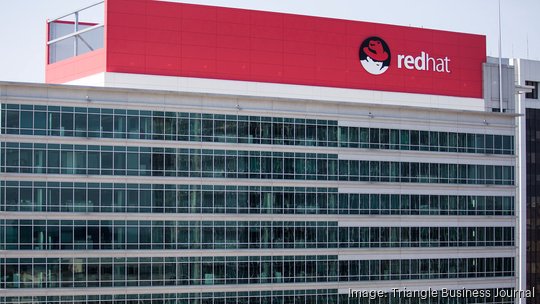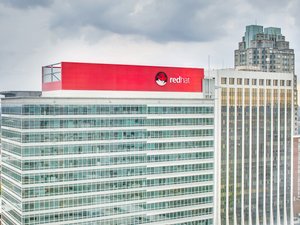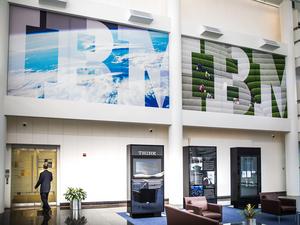
A new innovation out of IBM and Red Hat showcases how the companies are working to leverage each other’s strengths.
When IBM (NYSE: IBM) bought Raleigh-based Red Hat five years ago, the open source community had questions. How would Red Hat stay Red Hat? How would the companies collaborate while maintaining the separate existence executives were promising?
Slowly but surely, opportunities for tagging each other in — while retaining the boundaries — are emerging. They include innovations IBM is developing to take advantage of the booming industry around artificial intelligence, such as InstructLab, dubbed a first-of-its-kind model alignment technique that will bring open source community contributions into language learning models.
It’s the latest Big Blue-Red Hat collaboration, stemming from the $34 billion deal in 2019. And it shows cross-innovation is still happening between IBM and Red Hat, which IBM largely still treats as a separate unit.
The lab technique was invented about six months ago in an IBM research laboratory at the Massachusetts Institute of Technology. Red Hat was tagged in to. Jeremy Eder, a distinguished engineer at Red Hat who is based in Raleigh, described it as, “Wra[p] that experience in a more familiar open source development workflow.”
Eder said he’s spent the past several weeks heads down, giving the technique the open source makeover Red Hat is known for. His team took the paper IBM had written and “bootstrapped an open source community around it, one with contributions from domain experts and knowledge workers.
This project, which involved the open sourcing of a family of advanced language models, fit well with Red Hat because of its collaborative potential, Eder said. The code models were trained on 116 programming languages.
The new technique opens the door to the “open source way” of modeling, Eder said. The InstructLab methodology allows for the continuous development of models through constant incremental contributions, similar to how open source has worked in software for decades. With InstructLab, developers can custom-build models specific to their industries, complete with their own data. The hope is to provide additional value and secure more enterprise clients.
“We were kind of thinking that this was an impactful contribution to the overall AI dialogue, particularly from the standpoint of deliberate control of what goes into the model,” Eder said, noting that Red Hat’s customer base is looking for control over AI models. “The ecosystem of models that exist out there today is fantastically powerful and world-changing. However, they haven’t reached production deployment for a variety of reasons,” he said, pointing to factors like legal concerns, licensing issues and the ownership of underlying data. The technique is a way to target enterprise customers.
While Raleigh’s Red Hat team participated remotely, much of the work was done at its operation in Boston.
The stakes for success in AI are high for IBM, which, according to CEO Arvind Krishna’s comments Tuesday from New York, will require the open source community.
“We want to use the power of open source to do with AI what was successfully done with Linux and OpenShift,” Krishna said in a statement released in conjunction with the company’s annual THINK conference this week. “Open means choice. Open means more eyes on the code, more minds on the problems, and more hands on the solutions. For any technology to gain velocity and become ubiquitous, you’ve got to balance three things: competition, innovation and safety. Open source is a great way to achieve all three.”


